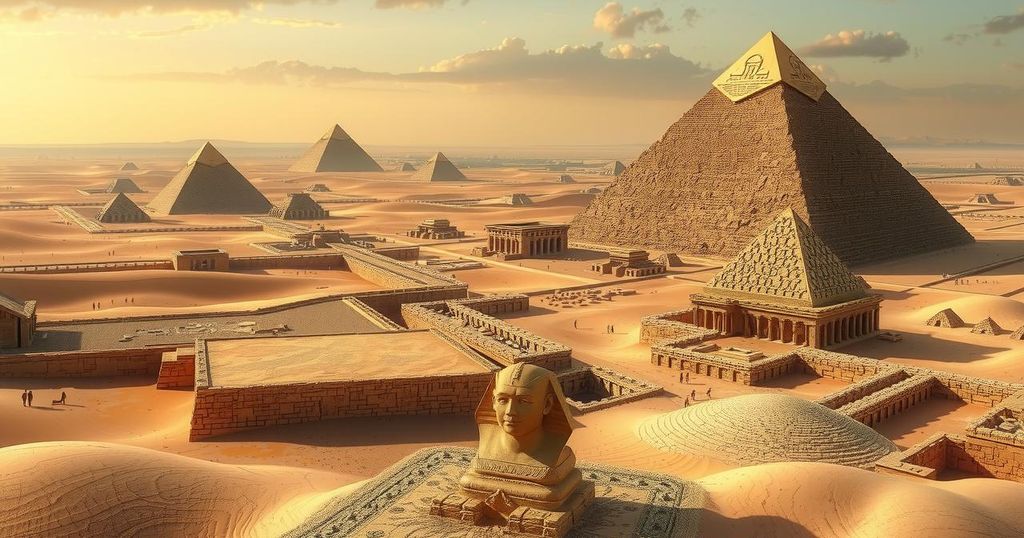Conflicts
AFRICA, ANTHROPOLOGY, ARCHAEOLOGY, COMMUNITY ENGAGEMENT, CORRADO MALANGA, EGYPT, ENVIRONMENTAL IMPACT, EUROPE, GIZA, ITALY, KHAFRE, LAWRENCE CONYERS, MENTAL HEALTH, PYRAMIDS OF GIZA, SCIENCE, SCOTLAND, UNIVERSITY, UNIVERSITY OF PISA, UNIVERSITY OF STRATH, UNIVERSITY OF STRATHCLYDE, WAR, ZA, ZAHI HAWASS
Sophia Klein
Debate Erupts Over Discovery of Hidden City Beneath Pyramids of Giza
A recent study claims to have discovered a vast hidden city beneath the Pyramids of Giza using radar technology, sparking considerable debate among experts. Critics, including notable Egyptologists, dispute the study’s credibility, with claims regarded as potentially exaggerated and lacking scientific support. The findings remain unverified pending peer review, raising questions about the future of archaeological research in this iconic location.
Recent research claims the discovery of a hidden city beneath the Pyramids of Giza, igniting debate among experts in the field. Conducted by the Khafre Project team, the study employed Synthetic Aperture Radar technology, which purportedly revealed a massive underground city over a mile in size, along with potential evidence of an ancient water system.
During a press conference, the researchers suggested that multiple structures connected by corridors could reside beneath the pyramids, asserting, “an entire hidden world of many structures” may exist below. While they regard their findings as transformative for understanding ancient Egyptian topography, there has been considerable pushback from established Egyptologists.
Prominent Egyptologist, Dr. Zahi Hawass, denounced the study, labeling the claims as “fake news” and asserting that the methodology lacked scientific validation. The research, led by Professor Corrado Malanga of Italy’s University of Pisa and Professor Filippo Biondi from the University of Strathclyde, awaits independent peer review, following significant criticism regarding its scientific integrity.
Critics, including University of Denver’s Professor Lawrence Conyers, express skepticism over the capacity of radar technology to penetrate such depths. Conyers described the claims as a “huge exaggeration,” while suggesting there may be smaller, significant structures present. Researchers stated they discovered five key structures beneath the Khafre Pyramid, which they believe might have ties to ancient water systems and Egyptian lore concerning the Hall of Records.
Doubts over Professor Malanga’s credibility arise due to his past engagement with fringe theories regarding UFOs and alien abductions. Furthermore, the employment of AI in interpreting the radar images has faced scrutiny. However, Malanga remains resolute, emphasizing the potential for revealing more archaeological secrets. He noted, “Until yesterday, Egyptologists said there was nothing… but there are a lot of things.”
Seeking excavational permission poses a challenge for the researchers as they endeavor to explore the area further for additional archaeological evidence beneath these ancient structures.
The announcement of a purported ancient city beneath the Pyramids of Giza has generated substantial controversy and skepticism among experts. While the research claims revolutionary findings that could alter perceptions of ancient Egypt, many in the academic community question the study’s scientific legitimacy. Rigorous peer review and further exploration are essential to determine the validity of these claims and understand the site’s historical significance.
Original Source: www.the-sun.com








Post Comment